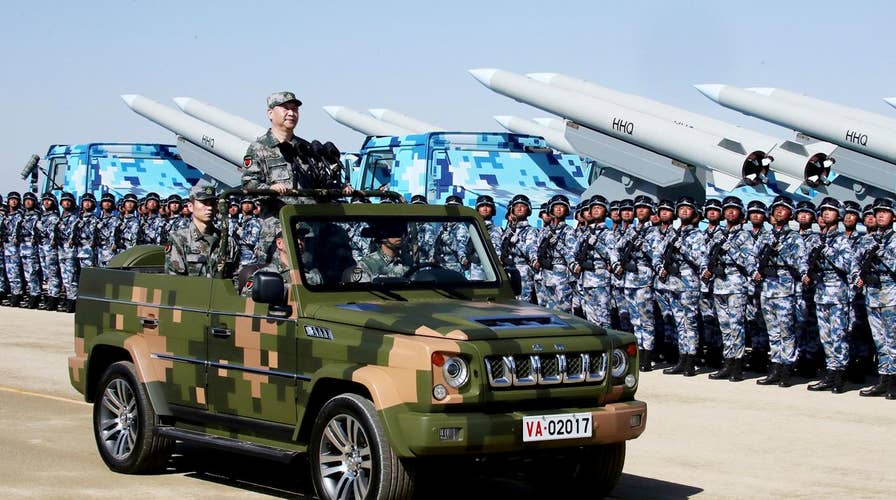China quietly test-fires missiles over the weekend
U.S. spy agencies detected the Chinese military launching a series of 20 missiles
In a brazen broadside to America, China performed a dramatic series of missile tests this weekend -- targeting mock United States missile batteries and jets -- as the superpower flexes its muscles amid global tensions with North Korea and the threat of U.S. intervention, U.S. officials told Fox News.
U.S. spy agencies detected the Chinese military launching a series of 20 missiles at mock targets designed to look like American THAAD missile batteries and advanced U.S. Air Force F-22 stealth fighter jets.
"You don't need to build a mock-up of an F-22 or THAAD to see if you could hit one with a missile," said a U.S. defense official who was not authorized to speak with the media. "This was a clear message by the Chinese."
China has long protested the deployment of U.S. THAAD anti-ballistic missiles to South Korea, and doubled down on its condemnation after the government in Seoul said they want four more American launchers over the weekend, following North Korea’s Friday test of a second KN-20 intercontinental ballistic missile, a record-setting launch that flew the farthest distance in the regime's history.
Officials believe the Chinese military tested intermediate, medium and cruise missiles and say the tests were also meant to coincide with China’s Army Day celebrations on Aug. 1, when China staged a massive military parade involving 12,000 troops in the desert along with dozens of tanks, jets and missiles. Chinese state media said it was the first time China ever celebrated Army Day with a parade, attended by Chinese President Xi Jinping and Beijing’s military chief.
China’s brazen test came more than a week after a pair of Chinese J-10 fighter jets buzzed a U.S. Navy EP-3 reconnaissance plane in the East China Sea.
China currently has as many destroyers, crusiers and submarines as the U.S. Navy. Beijing recently put a new type of destroyer in the water which analysts say rivals advanced American Arleigh Burke-class destroyers.
Days before the China missile tests on Saturday, U.S. military satellites also detected a failed attempt of China’s anti-ballistic missile system -- Beijing’s version of the U.S. THAAD system.
At the State Department on Tuesday, Secretary of State Rex Tillerson told reporters the U.S. and China are at a “pivot point” in history.
CHINESE FIGHTER JETS BUZZ U.S. NAVY SPY PLANE IN EAST CHINA SEA
Tillerson acknowledged differences between the super powers over the North Korea issue and Beijing’s continued construction of military bases on man-made islands in the South China Sea.
“We will deal with those differences in a way that does not lead to open conflict,” Tillerson vowed.
China's U.N. envoy said this week it’s up to the U.S. and North Korea, not Beijing, to reduce tensions and work toward resuming talks to end Pyongyang's nuclear and intercontinental ballistic missile programs.
Tillerson said Tuesday “at some point” he would be open for talks with North Korea.
One day after North Korea’s record-setting intercontinental ballistic missile launch, President Trump tweeted he was “very disappointed” in China for doing “nothing” to stop North Korea’s missile and nuclear weapons programs.

